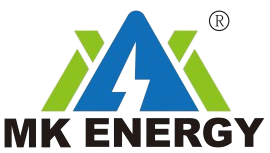Electric Vehicle Market Overview
China’s electric vehicle industry is developing rapidly. By the end of 2022, the number of new energy vehicles in China will be about 13.1 million, accounting for 4.10% of the total number of vehicles, an increase of 67.13%. Among them, the number of pure electric vehicles is 10.45 million, accounting for nearly 80%. There were 5.35 million newly registered new energy vehicles, an increase of 81.48% compared with the previous year, showing a high-speed growth trend. Driven by the rapid development of electric vehicle-related technologies, the penetration rate of electric vehicles has further increased. At the same time, with the decline of new energy vehicle subsidy policies, the electric vehicle industry, which was completely driven by policies in the past, will gradually return to the market.
Electric vehicle development dilemma
An electric vehicle refers to a vehicle powered by an on-board power supply, driven by a motor to drive the wheels, and meets the requirements of road traffic and safety regulations. Generally, high-efficiency rechargeable batteries or fuel cells are used as power sources. According to different power sources, mainstream electric vehicles under development in China can be divided into: pure electric vehicles (BEV) and hybrid electric vehicles (PHEV). With the introduction of local subsidy policies one after another, we believe that the era of great development of electric vehicles is coming. But until then, factors such as poor infrastructure, consumer concerns about battery life and the hassle of charging for long periods of time still hinder the further maturity of the electric vehicle market.
Electric Vehicles and Flexible Energy Storage
From the perspective of the electric vehicle industry chain, we can see the way to break the situation. The most important component in the middle reaches of the industrial chain is the battery. In the post-market of electric vehicles, service providers such as charging piles and battery swapping stations occupy a more important position. These are closely related to the problems encountered in the practical application of electric vehicles.
At the “Vehicle-Network Synergy Series High-End Roundtable Conference” held this year, some experts proposed a “free driving” business model, that is, free driving, two-way charging, instant stop and plug, and free rescue-let electric vehicles and the grid form a “free driving” business model. Vehicle-network interaction”. During low power consumption, the power system charges electric vehicles; during peak power consumption, electric vehicles discharge the system. In this way, the electric vehicle is not only a means of transportation, but also a terminal for energy storage and feedback. The organic integration and coordination of automobiles, charging piles, and power grids can form a huge “power sponge” network to achieve large-scale, cross-time, low-cost, and high-security flexible energy storage.
As the penetration rate of electric vehicles increases, its scale effect will make it feasible and economical for electric vehicles to participate in energy storage systems. The development of the energy storage function of electric vehicles can promote the consumption of wind power and photovoltaics and improve the efficiency of the power grid. These factors can make electric vehicles an important component of the energy storage system. In short, exploring more possibilities for the development of the energy storage market still requires the whimsical ideas of many talented people.


